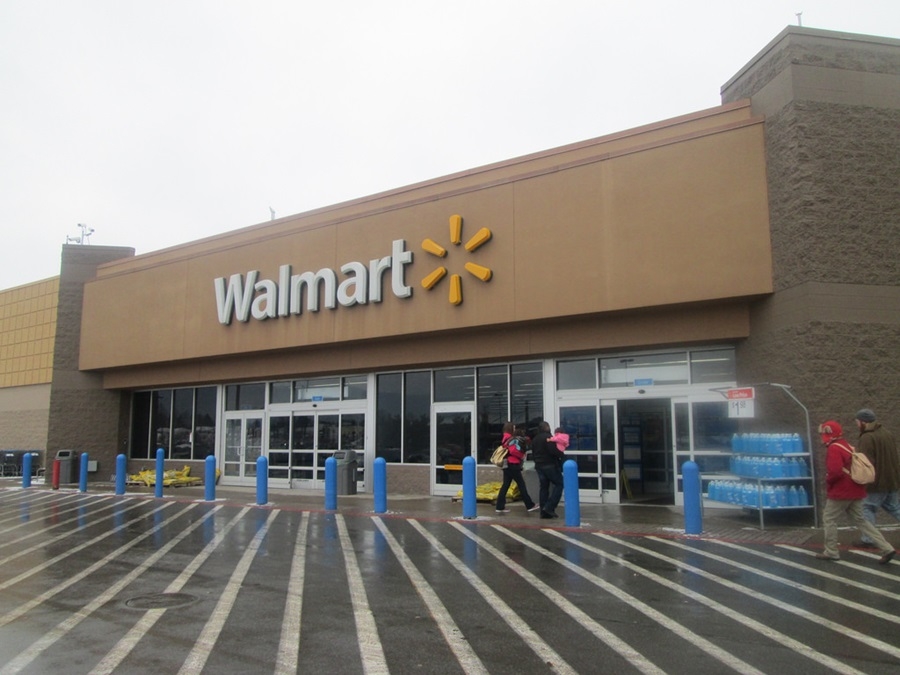The growing concern over the energy consumption of blockchain tech is one of the things about it that are being criticized. However, it seems that blockchain itself is trying to alleviate the problem by creating designs that can lower energy cost and usage.
Recently, retail juggernaut Walmart was granted a patent for the development of an electrical grid that will accurately distribute energy among appliances. The U.S. Patent and Trademark Office awarded Walmart the intellectual property on June 14, Cointelegraph reported.
A household contains several appliances that consume varying amounts of electricity. But sometimes, these appliances eat up more power than they should, even if they are classified as “smart” appliances.
Here’s where the patent design comes in. A household can build a network of these appliances and allocate a certain amount of cryptocurrency to each of them. This digital money will be used to purchase electricity from a utility provider over a set bill period, like one month.
If a particular device runs out of cryptocurrency, other appliances can lend it their extra cryptocurrency to power it until the next billing cycle. Alternatively, if an appliance has excess crypto coin, the network can either choose to sell the cryptocurrency or carry it over to the next month. The devices essentially support each other until such time that their cryptocurrency is refreshed.
And since blockchain tech records each of the transactions made by the appliances, homeowners can scan the network to see which device is consuming an unnecessary amount of electricity. But it’s not just homeowners who can leverage this but other large companies that have hundreds of these energy-consuming devices.
This technology isn’t new as the U.K. is currently employing the same design, although it was scaled it up to houses rather than appliances. Dubbed Repowering London, the project involves a neighborhood that’s harvesting solar power via panels on the roof.
Under the network, each household can use, sell, or trade the energy they harness in real-time. So let’s say a household runs out of power, the network will then find households that have excess energy and transfer that to units that are currently in need. The purchase is then paid via a particular cryptocurrency, which is then recorded on a blockchain once per day to decrease energy costs.
Moreover, there is also an artificial intelligence integrated into the project that calculates exactly how much a certain household consumes. This, in turn, will help the AI make an accurate decision on how to accurately distribute the energy harvested by the neighborhood as a whole.



 Our laser technique can tell apart elephant and mammoth ivory – here’s how it may disrupt the ivory trade
Our laser technique can tell apart elephant and mammoth ivory – here’s how it may disrupt the ivory trade  Toyota Teams with Tencent, Nissan Joins Forces with Baidu in China AI Drive
Toyota Teams with Tencent, Nissan Joins Forces with Baidu in China AI Drive  Samourai Wallet Founders Arrested, Crypto Markets Tumble Amid Regulatory Heat
Samourai Wallet Founders Arrested, Crypto Markets Tumble Amid Regulatory Heat  What is ‘techno-optimism’?
What is ‘techno-optimism’?  Robinhood Unveils SHIB, AVAX, and COMP Listings for New York Traders, Expanding Crypto Access
Robinhood Unveils SHIB, AVAX, and COMP Listings for New York Traders, Expanding Crypto Access  Mercedes-Benz to Release Luxury Electric Van in China
Mercedes-Benz to Release Luxury Electric Van in China  Hong Kong's First Bitcoin and Ether ETFs Set to Begin Trading April 30, Official Approval Granted
Hong Kong's First Bitcoin and Ether ETFs Set to Begin Trading April 30, Official Approval Granted  US SEC Set to Reject Spot Ether ETFs in May Amid Regulatory Hurdles
US SEC Set to Reject Spot Ether ETFs in May Amid Regulatory Hurdles  Shiba Inu Announces Shibarium Hardfork: New Capabilities Teased, SHIB Price Jumps 3.2%
Shiba Inu Announces Shibarium Hardfork: New Capabilities Teased, SHIB Price Jumps 3.2%  Mercedes Launches 2025 G-Class Electric with Four Motors and Revolutionary Tank Turns
Mercedes Launches 2025 G-Class Electric with Four Motors and Revolutionary Tank Turns  Qualcomm Responds to Snapdragon X Elite Benchmark Cheating Claims
Qualcomm Responds to Snapdragon X Elite Benchmark Cheating Claims  AI-powered ‘deep medicine’ could transform healthcare in the NHS and reconnect staff with their patients
AI-powered ‘deep medicine’ could transform healthcare in the NHS and reconnect staff with their patients  Tesla Nears FSD Licensing Deal with Major Automaker, Hits 1.3 Billion Milestone
Tesla Nears FSD Licensing Deal with Major Automaker, Hits 1.3 Billion Milestone  BlackRock Bitcoin ETF Sees Zero Inflows; SEC Delays Ether ETF Decision
BlackRock Bitcoin ETF Sees Zero Inflows; SEC Delays Ether ETF Decision  TikTok Vows to Fight US Ban After Biden Signed Bill
TikTok Vows to Fight US Ban After Biden Signed Bill  US Prosecutors Demand Three Years for Former Binance CEO Zhao Over Laundering
US Prosecutors Demand Three Years for Former Binance CEO Zhao Over Laundering 































